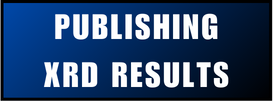
Topics List
          
We are now accepting submissions to the AVL. Suggested video topics are below but creators are encouraged to submit videos on topics not included:
Overview for Non-Crystallographers
- Historical perspective (see https://www.iycr2014.org/learn/watch)
- Crystallization/ what can we glean?
- How to grow a good crystal
- Visual inspection
- Size, shape, crystallinity
- General confirmation of synthetic process
- Three-Dimensional picture of your molecule in the solid state
- Connectivity
- Stereochemistry
- Packing considerations
- Bonds, angles, torsions
- Intermolecular interactions
- Hydrogen bonding
- Pi-stacking
- Void spaces
- Diffraction assessment
- Well-formed reflections, high resolution, proper instrument
- Unit cell check
- Known compound, realistic parameters
- Data collection
- Data integration / processing
- Proper symmetry, scaling and corrections
- Structure solution
- Structure refinement
- Structure Validation (PDB, CCDC)
- Final report
- Impact
What You Can Glean from Your XRD Data
- General confirmation of synthetic process
- Three-Dimensional picture of your molecule in the solid state
- Connectivity
- Stereochemistry
- Packing considerations
- Bonds, angles, torsions
- Intermolecular interactions
- Hydrogen bonding
- Pi-stacking
How to Publish XRD Results
- Prepare your CIF file
- Use CheckCIF to validate the CIF file
- Make sure all A-Alerts are answered/corrected
- Include information about refinement issues/modeling of structure
- Submit CIF file to journal or CCDC according to author instructions
- Make sure data quality is appropriate for target publication
- Include experimental details in manuscript or supporting information as needed
- Include ORTEP of structure in S.I.
- Consideration for appropriate Figures for publication
Theory
- Data Collection
- Diffraction Geometry
- Bragg’s Law
- Laue equations
- Ewald sphere
- Four circle (serial detectors) and rotation (area detectors) geometry
- Friedel’s Law
- Intensity Data Collections
- Unique data
- Redundancy
- Equivalent reflections
- Selection and accuracy of data
- Integrated Intensities
- Data Reduction
- Corrections
- Lorentz and polarization
- Absorption
- Crystal degradation
- Scaling
- Structure Factors and Fourier Synthesis
- Waves, vectors, and complex numbers
- Superposition of waves
- Structure factors
- Fourier synthesis
- Anomalous scattering
- The phase problem
- Structure Solution
- Direct methods
- Heavy atom methods
- Charge Flipping methods
- Diffraction
- X-ray scattering from electrons, atoms, unit cells, and crystals
- The structure factor equation
- The electron-density equation
- Miller Planes
- Bragg’s law
- Resolution
- The phase problem
- Symmetry - Crystal and Lattice
- 7 Crystal systems
- 14 Bravais Lattices
- Unit cells
- Asymmetric units
- Direct and reciprocal lattices
- Space Group Symmetry
- Herman-Mauguin and Schönflies notation
- Symmetry operators – inversion, rotation, improper rotation, mirror planes, screws axes, and glide planes
- Generating space group tables
- General and special positions
- Interpreting entries from the International tables entries
Applied
- Crystal Growth Techniques
- Evaporation, slow cooling, vapor diffusion, solvent diffusion, convection, sublimation, etc.
- Solvent selection
-
Crystal Screening
- Size, shape, and general appearance
- Crystal mosaicity
- Polarizing microscopy
- Unit cell determinations
-
Crystal MountingMounting air-sensitive materials
- Goniometer heads
- Mounts
- Fiber/adhesive, loops, micromounts, etc.
-
Crystallographic Databases
- Contents
- Search methods and strategies
-
Data Collection
- Indexing
- Counting Statistics
- Data quality and limitations
- Low temperature and room temperature data
- Unique Data
- Redundancy
-
Space Group Determination
- Metric symmetry and Laue symmetry
- Unit cell contents
- Lattice centering
- Systematic absences
- Systematic distribution of intensities
-
Structure Solution and the Phase Problem
- Direct methods
- Heavy atom methods
- Charge Flipping methods
-
Structure refinement
- Least-squares refinement
- Difference Fourier synthesis
- Atomic displacement parameters
- Hydrogen atoms
- X-ray generation
- Sealed tube, rotating anode, synchrotron, and X-ray optics
- Origins
- Absorption and filtering
- Selection of radiation
- X-ray tube construction and geometry
- Safety
|